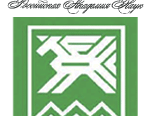А. Г. Кижина, С.Н. Сергина, Л.Б. Узенбаева, В.А. Илюха, Э.Ф. Печорина, Е.П. Антонова, А.Е. Якимова, Д.В. Панченко.
Морфометрические параметры эритроцитов крови видов отряда rodentia: от полевки до бобра
Keywords: erythrocytes; diameter; surface area; rodents; metabolism; environment
Red blood cells (RBC) play a leading role in the blood gas transport function and oxygen supply to tissues, and the number and size of RBC have a decisive role in tissue oxygenation. The size of erythrocyte varies significantly among animal species, depending on a number of factors. Data on the effect of various factors (living conditions, lifestyle, systematic affiliation, body weight) on the size of RBC are contradictory. The choice of mammals belonging to the Rodentia order was dictated by their very extensive distribution range and ecological features. A comparative study of the morphometric parameters (surface area and diameter) of RBC was performed for 11 Rodentia species: European beaver (Castor fiber), Canadian beaver (C. canadensis), nutria (Myocastor coypus), muskrat (Ondatra zibethicus), rat (Rattus norvegicus), chinchilla (Chinchilla lanigera), red squirrel (Sciurus vulgaris), bank vole (Myodes glareolus), European water vole (Arvicola amphibius), laboratory mouse (Mus musculus) and Syrian hamster (Mesocricetus auratus). A direct dependence of the size of erythrocytes on body weight was established, which agrees with the data reported by other researchers. The maximum size of RBC was noted in C. canadensis and C. fiber. Besides, large erythrocytes were detected in all the studied semiaquatic animals. The surface area of erythrocytes in terrestrial rodent species decreased in the following order: C. lanigera – R. norvegicus – S. vulgaris – M. musculus – M. glareolus. The influence of physiological (weight, sex, longevity) and ecological factors (food habits and habitat) on the morphometric parameters of erythrocytes was revealed, while systematic affiliation did not affect cell size.
Indexed at RSCI


